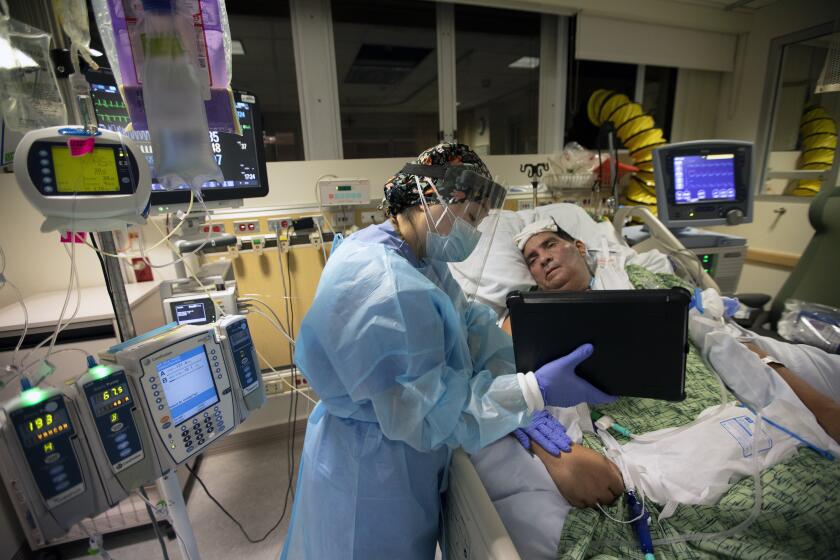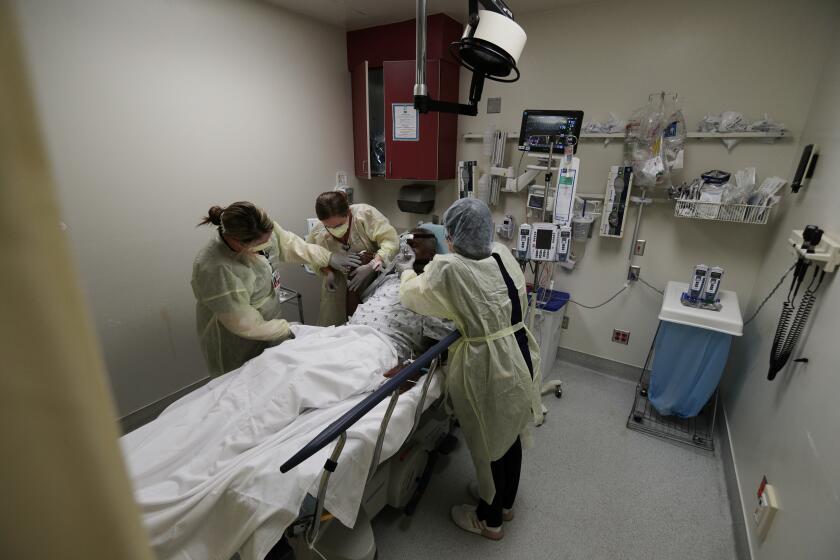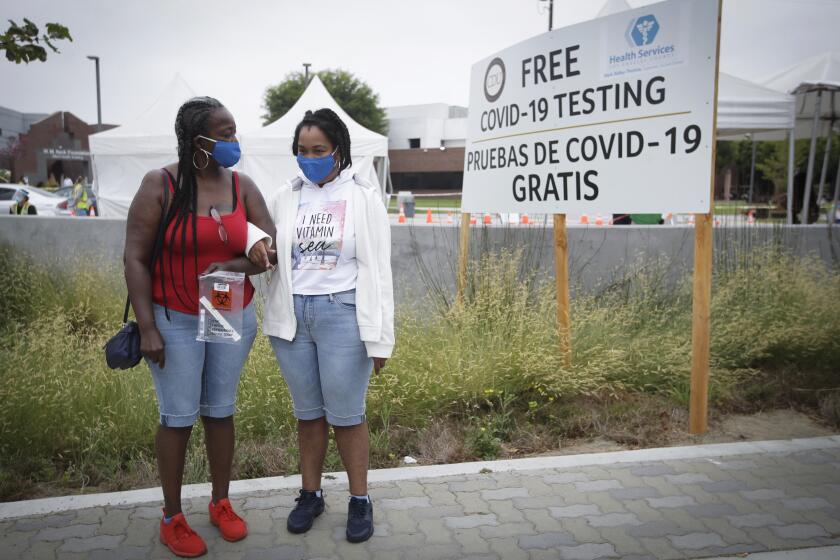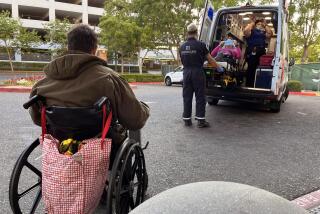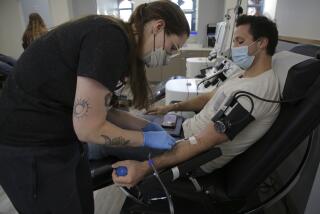Central Valley hospitals brace for oxygen shortages, lack of space for bodies
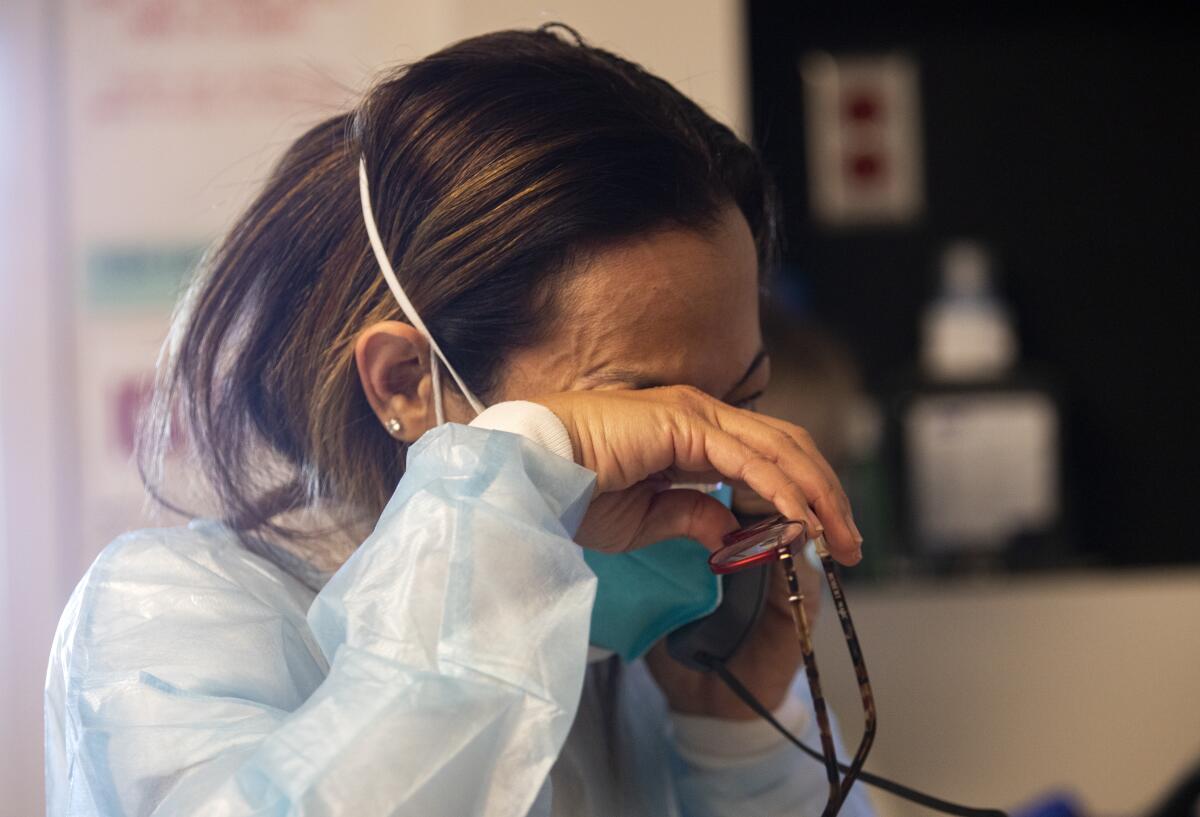
Officials in Fresno County are scrambling for oxygen-making machines to care for the rising tide of those sick with COVID-19, as the number of bodies has placed greater pressure on funeral homes.
Officials in California’s 10th-most populous county say the situation is not as severe as that in Los Angeles County. But health authorities are seeking to ease pressure on hospitals by sending home COVID-19 patients who would normally stay in the hospital — and to do so, they’re searching for machines that can generate oxygen for patients at home.
“It’s a very grave scenario to make that decision,” said Dr. Rais Vohra, Fresno County’s interim health officer. “Because under normal conditions, under ideal conditions, everyone who needs oxygen would be admitted to the hospital. Unfortunately, we’re operating in a disaster and so we don’t have that luxury, and we have to make really hard choices and do the best that we can.”
Problems on Sunday caused at least five hospitals in L.A. County to declare an internal disaster, which closed the facilities to all ambulance traffic.
Vohra said he was on the hunt to track down some oxygen concentrators — machines that can pull oxygen out of air. “We’re trying to do as much as we can to track down the supplies that will be needed just to prepare ourselves for an even larger number of patient volumes in the weeks to come.”
The demand for oxygen is critical.
“A lot of people just need oxygen in order to get through this,” Vohra said. These are patients who have pneumonia and are able to walk but need a tube of oxygen flowing at a high rate plugged into their nose to avoid becoming critically ill.
At the moment, it’s hard to scale up a program that can accommodate perhaps hundreds of patients a day to be set up for home-oxygen treatment. But that’s what they’re trying to do, Vohra said.
Fresno County is the most populous county in the San Joaquin Valley, one of the most productive agricultural areas of the country. But like Southern California, the San Joaquin Valley has been hit hard by the pandemic, and it has 0% of its intensive care unit capacity available.
At least three counties in the San Joaquin Valley were among the first in the state to run out of ICU beds.
And in this county of nearly 1 million people, there were only 11 available intensive care unit beds on Tuesday. That means many critically ill patients have had to remain in the emergency room when they should be in the ICU, Vohra said.
“There’s other places within the hospital that they’re trying to make space for critical care patients,” Vohra said. Less critically ill patients may need to be cared for outdoors, in the tents set up in the parking lot.
The coming weeks are a source of worry. Already, there are intermittent times at which patients in ambulances are waiting several hours before being allowed into the emergency department. Ambulance staff are trying to redirect people who don’t have a true emergency to a primary care doctor or urgent care center.
“I’m very worried that we are going to see an uptick in the number of hospitalizations and deaths,” considering the big gatherings that occurred over the holidays, Vohra said. “We haven’t really seen a letup of the surge that we’ve already seen…. There really hasn’t been a reprieve. And so, we’re certainly just waiting and bracing ourselves to see what the next couple of weeks brings.”
Within the hospitals in Fresno County, officials report they’re still able to adequately provide oxygen through the existing infrastructure; they’ve received help from American Ambulance, a company that provides ambulance service in the county, which has machines to generate oxygen and refill tanks.
But Vohra said that what’s happening in L.A. is a cautionary tale about how infrastructure can easily become overwhelmed.
“We know — because Los Angeles is experiencing this — that the demand could … overwhelm our ability to meet people’s demands,” Vohra said. Some hospitals are under pressure because of the significant volume of patients, “the inability to find spaces for them,” and limited staffing.
Los Angeles County hit another distressing milestone Tuesday, surpassing 11,000 deaths since the beginning of the pandemic as officials warned conditions will only get worse in the coming weeks.
Funeral homes in Fresno County are also under pressure. Mortuaries have had to figure out ways to maximize storage space for the increasing numbers of the dead, Vohra said, and mobile refrigeration units have been called in to store some bodies.
“This is a mass casualty, a mass fatality event that our county is experiencing. And we’ve had to expand the storage areas for the dead bodies here in Fresno County beyond what’s normal,” Vohra said.
Whether the county will need to resort using two refrigerated trailers being sent by state officials depends on how fast funeral homes and mortuaries can process bodies, Vohra said.
“It’s going to take that whole ecosystem to try to figure out how best to work through this really large number of bodies that they have to get taken care of,” Vohra said. “I’m glad that those two trucks are coming, and I sure hope that we don’t need them.”
Fresno County has had one of the highest death rates per capita in the last week of any county in California over the past seven days, ranked 12th of the 58 counties. Since Dec. 1, 230 COVID-19 deaths have been reported in Fresno County, nearly one-third of the cumulative total of 711 deaths recorded over the last 10 months.
More to Read
Sign up for Essential California
The most important California stories and recommendations in your inbox every morning.
You may occasionally receive promotional content from the Los Angeles Times.
